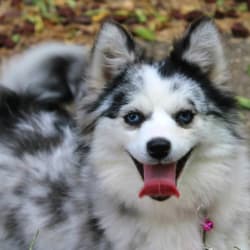The FGF5 gene affects hair length in many species, including cats, dogs, mice, and humans. In dogs, an Lh allele confers a long, silky hair coat across many breeds, including Yorkshire Terriers, Cocker Spaniels, and Golden Retrievers, while the Sh allele causes a shorter coat, as seen in the Boxer or the American Staffordshire Terrier. In certain breeds, such as the Pembroke Welsh Corgi and French Bulldog, the long haircoat is described as “fluffy”. The coat length determined by FGF5, as reported by us, is influenced by four genetic variants that work together to promote long hair.
The most common of these is the Lh1 variant (G/T, CanFam3.1, chr32, g.4509367) and the less common ones are Lh2 (C/T, CanFam3.1, chr32, g.4528639), Lh3 (16bp deletion, CanFam3.1, chr32, g.4528616), and Lh4 (GG insertion, CanFam3.1, chr32, g.4528621). The FGF5_Lh1 variant is found across many dog breeds. The less common alleles, FGF5_Lh2, have been found in the Akita, Samoyed, and Siberian Husky, FGF5_Lh3 have been found in the Eurasier, and FGF5_Lh4 have been found in the Afghan Hound, Eurasier, and French Bulldog.
The Lh alleles have a recessive mode of inheritance, meaning that two copies of the Lh alleles are required to have long hair. The presence of two Lh alleles at any of these FGF5 loci is expected to result in long hair. One copy each of Lh1 and Lh2 have been found in Samoyeds, one copy each of Lh1 and Lh3 have been found in Eurasiers, and one copy each of Lh1 and Lh4 have been found in the Afghan Hounds and Eurasiers.
Interestingly, the Lh3 variant, a 16 base pair deletion, encompasses the Lh4 variant (GG insertion). The presence of one or two copies of Lh3 influences the outcome at the Lh4 locus. When two copies of Lh3 are present, there will be no reportable result for the FGF5_Lh4 locus. With one copy of Lh3, Lh4 can have either one copy of the variant allele or the normal allele. The overall FGF5 result remains unaffected by this.
















